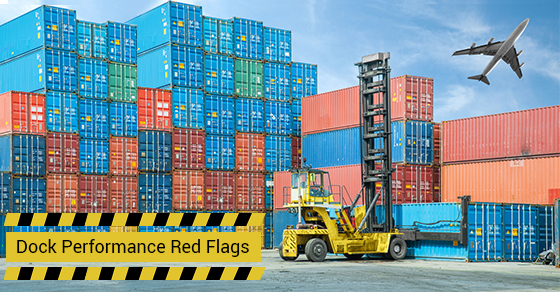A dock lift is an integral part of the loading system for any warehouse.
The actual function of a dock lift is simply to act as a platform that is adjustable by height, but its extensive benefits are often overlooked. It allows for greater height adjustments than a leveler and can be used a bridge between a truck and a dock; essential tasks that streamline your backdoor operations.
Dock lifts can be powered by mechanical, air powered, or hydraulic systems. They eliminate ramp danger and strive to improve safety by preventing the need for manual handling of freight.
Different types of dock serve different needs. Some of these include:
- HED Series Dock Lifts
- High Capacity Dock Lifts
- Low Profile Dock Lifts
- LDL Dock Lifts
- Custom Dock Lifts
Safety for loading dock areas is crucial. There are various hazards that you need to ensure are void in work area in order to maintain the safety of both your staff and your equipment. Some of these issues may include:
- Unsafe floor surfaces such as slippery, wet, or oily surfaces
- Not having proper fall protection on the dock
- Having unsecured dock plates
- Carbon monoxide inhalation
- Improper lifting and carrying that could result in back injuries
- Improper operation of forklifts or other machinery
- Lack of communication
While the overall safety for a loading dock area is highly important, it is also important that elements of the loading dock are performing at peak conditions.
To ensure the performance of your dock lift, regard the following 20 red flags for dock lift performance issues:
- Cylinder oil build-up
- Lift mechanism interference (such as debris from the pit area)
- Wear and tear of rollers, pins, bushings, etc.
- Cracks and leaks in the hydraulic fittings
- Abrasions or leaks in the hoses and electrical lines
- Abnormal noises or vibrations
- Issues with the safety devices that cause improper operation
- Damaged hinged bridge
- Changing weather or temperature
- Power outages
- Replacing parts with parts not recommended by the manufacturer
- Strange odors emanating from the machinery
- The lift will not fully raise
- Non-compliance with OSHA or other regulatory safety procedures
- Equipment does not rise but pump is running
- Equipment raises slowly or too fast
- Equipment lowers slowly or too fast
- The motor stalls, stops, or the heat of the motor is excessive
- The lift raises but then lowers back down
- The equipment raises but then doesn’t lower
Should you notice any of these red flags in your machine’s performance, it’s essential you contact the manufacturer at the first sign of concern. Issues with dock lifts tend to get worse over time, but having a qualified professional inspect and troubleshoot your problem can prevent further damage.


